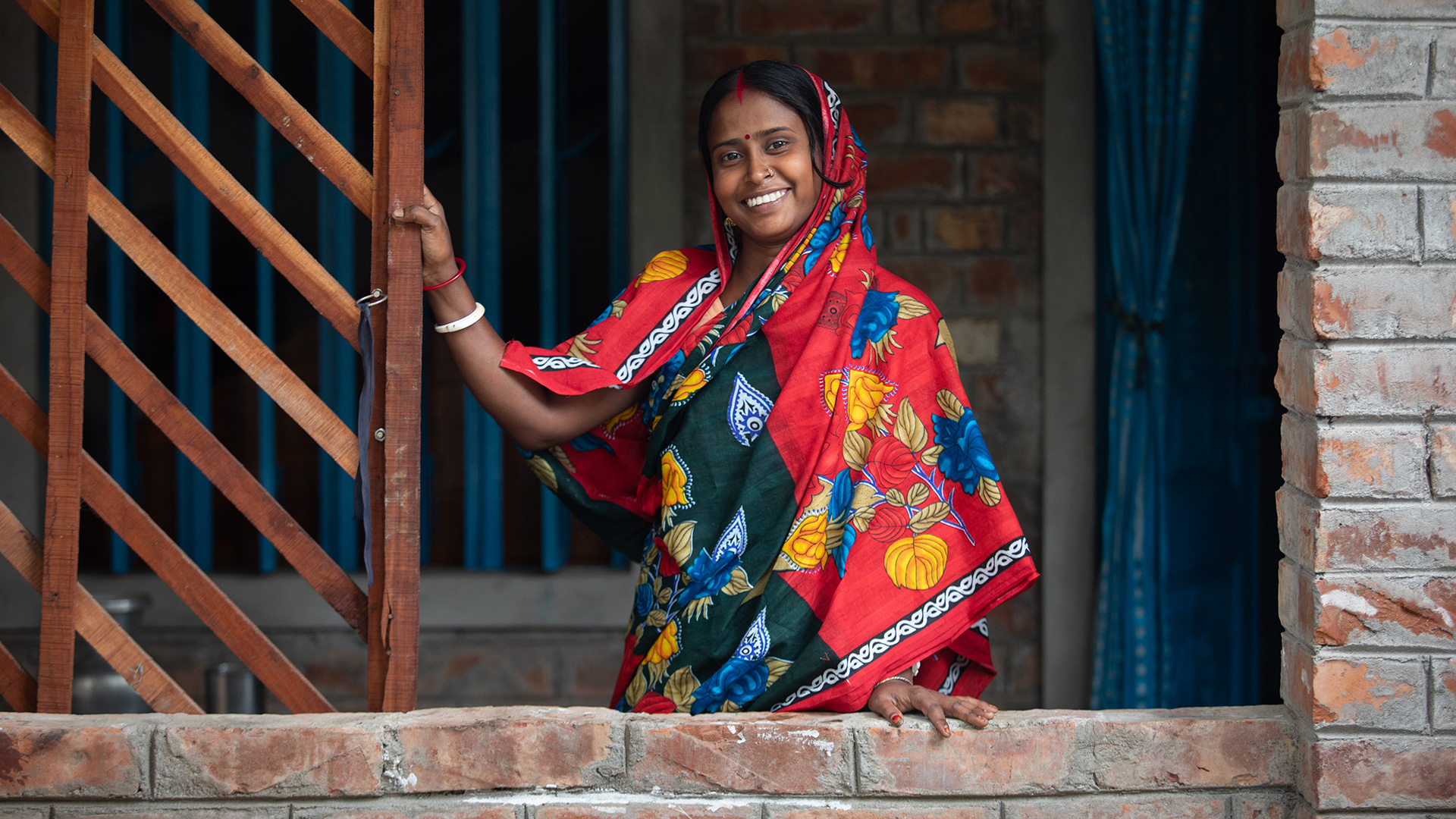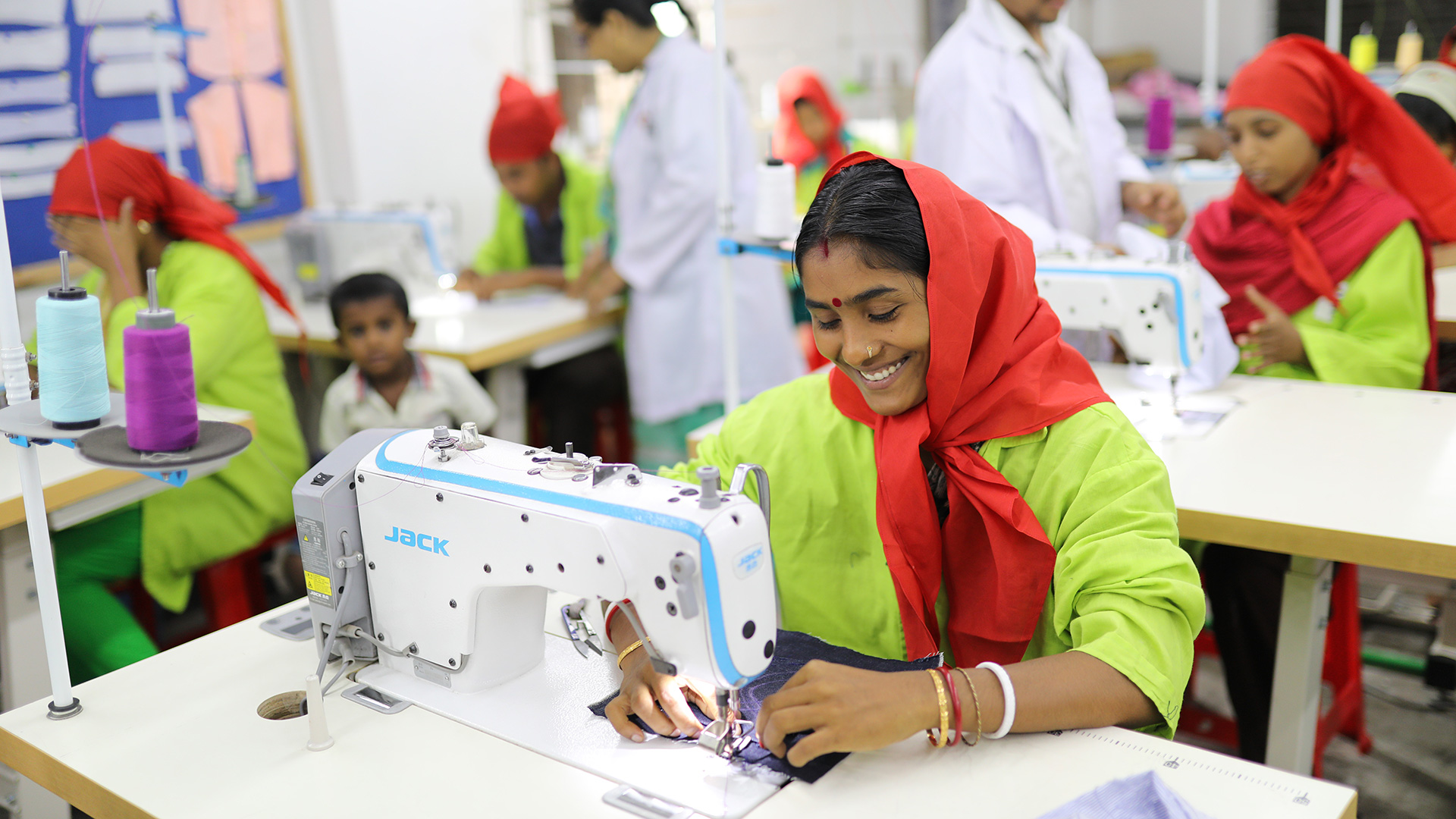50% of Bangladesh’s population will live in urban settlements by 2050. 14,000 slums currently exist across the country, with approximately 7 million people living in them.
We work in 20 cities, to make cities and human settlements safe, resilient, and sustainable. Our work reduces multidimensional poverty and deprivation by supporting one million people living in urban poverty to improve their wellbeing, resilience, and realise their rights.
We look at the challenges people in each city are facing and work with local government, private sector, and the community to find sustainable solutions for:
- Ensuring affordable, adequate basic services
- Ensuring livelihood, skills, and entrepreneurship development opportunities
- Ensuring adequate, safe, and affordable housing, land tenure security and overall slum upgrading
- Cities and human settlements adopting and implementing integrated policies and plans towards inclusion, resource efficiency, mitigation, and adaptation to climate change and resilience to disasters
- Strengthening urban governance, for inclusive, accountable, and pro-poor urban management and planning
- Strengthening the commitment of policy actors towards creating more liveable cities
- Ensuring sustainable pro-poor and inclusive urban growth through advocacy and partnership
Mayors from 20 cities allocated USD 4,742,370 from their annual budgets for pro-poor urban development, linking community action plans with city plans
USD 711,356 leveraged from city authorities and USD 2,371,190 through establishing referral mechanisms
750,000 people in 400 urban slums registered through a real-time monitoring system
729,019 people living in 400 slums in 20 cities benefited from slum upgrading
65,000 people connected with municipal waste management services
28,525 people from 28 ready-made garment sector factories accessed services through one-stop service centres
10,000 people received livelihoods and asset transfer support
2,096 students continued education through grants
1,700 infrastructure projects completed
1,200 new workers received skills training and job placement support
750 female leaders of community development organisations trained in leadership and organisational development
376 government officials and elected representatives of 17 cities received training and capacity development
50 low-cost climate-resilient houses constructed

HOUSES FOR EVERYONE, BUILT BY EVERYONE
A quiet transformation is taking place in the neighbourhood of Rajarbagan in Satkhira. Mud and tin huts are metamorphosing into beautiful brick homes.
The change comes from the collective efforts of engineers, architects and community artisans to create a low-cost, resilient, safe and sustainable housing model.
Shyamoli Das, a participant in the project, proudly shows off her house to visitors. The sturdy four-room home houses 10 members of her family. “I was embarrassed to invite people to my old house. Now I can invite 100 people. My children also invite their friends,” Shyamoli says.
Sitting on the steps leading up to her house, she points to her windows and says she never had those before.
The transformation began after a seed fund of USD 23,680 (BDT 2,000,000) was allocated as loans to build homes for those families considered the most disadvantaged. The community was then tasked with nominating those who met the criteria.
The households then formed savings groups, with an elected governing body comprising members of the community to supervise proceedings. The selected participants presented blueprints for their dream houses, which were made using sustainable, low-cost measures. Throughout the project, women took the lead in making decisions - from how they repay loans to what the houses would look like.
The architects finalised the plans for either one-storey or twostorey buildings, depending on the decision of the family. The families sourced material from local markets and helped with construction, further cutting the costs.
The model takes into account the needs and desires of each family when dreaming up their homes, and has now been expanded into other neighbourhoods in Khulna.
The model addresses the minimum criteria that the UN Habitat defines for adequate housing, including security of tenure, availability of services and infrastructure, affordability, habitability, and capability of expressing cultural identity.
A new home can also mean other changes. Shyamoli also runs a tea shop outside her house. “Now that I have a home, I had the courage to do something else, so I set up this shop,” Shyamoli beams.

